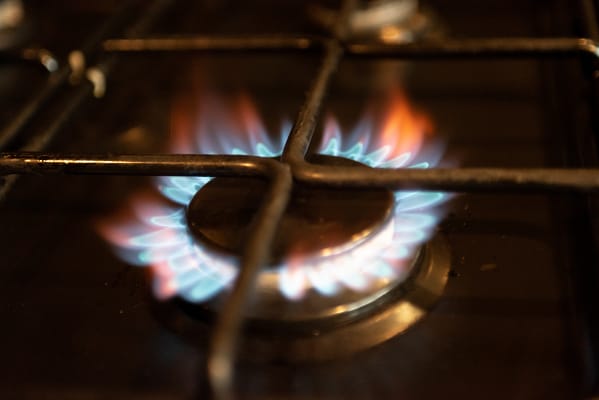US natural gas storage levels. The rate of increase is significantly lower than in previous years. If the winter is severe, natural gas prices could be much higher than they are now, considering production issues. Source: Bloomberg Finance LP, XTB
Producers in the US are starting to struggle
US gas production reached record levels of around 106 billion cubic feet per day at the beginning of this year. However, production has fallen significantly, and although it remains above the 5-year average, the lack of new investments may mean that the next year will not bring record production. Of course, this could change if Donald Trump becomes president.
He is known for his support of conventional energy sources and using the country’s own resources, so support for the upstream sector cannot be ruled out. However, further production growth in the US requires significantly higher prices, as was the case in 2021 and 2022.
More LNG for Europe?
It is worth remembering that the United States recently became the world’s largest exporter of liquefied natural gas, with a market share exceeding 20-21%. The US dominated this position, surpassing Australia and Qatar. However, it is worth remembering that the US took a very large part of the European market, as almost all gas supplies from Russia to Europe were stopped.
LNG exports from the US exceed 12 billion cubic feet per day this year and it may be much higher in the next years. However, this is still relatively small amount, considering production exceeding 100 bcfd and average consumption around 80 bcfd. At the turn of 2024 and 2025, new export terminals Plaquemines and Corpus Christi Stage III will start their operations.
They will bring about 2 bcfd capacity next year and at the beginning of 2026 additional 1 bcfd of export capacity. But that’s not all. By 2028, together with Canada and Mexico, export capacities will be increased to almost 25 billion cubic feet per day. That’s twice as much as now. This means more natural gas available for the whole world, including Europe.
Although it is difficult to expect a return to prices of EUR 15-20/MWh, which took place before 2021, the new export potential from North America may permanently lower prices in Europe below EUR 30/MWh. At the same time, this means less gas in North America itself, without production or imports increase.
Theoretically, the use of the full new export capacity by the US next year may lead to a lower gas stocks by 500-700 bcfd at the start of the heating season in 2025 (assuming no change in consumption, production, and imports from Canada). Therefore, the next year may bring the lowest stock level in 5 years, before the start of the heating season. In such a case, prices should be much higher than the current range of $2-3/MMBTU. However, higher prices in the US may do not mean higher prices in Europe.
According to the EIA, significant growth in export capacity from the US and other North American countries is expected in the coming years. By 2028, export capacity could double. Source: EIA
What about prices?
The volatility of the October and November futures contracts in the US is usually significantly increased. The price of the October contract increased by 10% in August. A similar situation occurs in the quotations of the November futures contract, which since rolling over from the October contract has already gained over 10% and the price is approaching the level of $3/MMBTU.
The seasonality of the gas market causes large differences between individual futures contracts. Currently, the November contract is traded at $2.8/MMBTU, while the January one (which is usually the highest in the futures curve) is already traded at $3.6/MMBTU. The price for January 2025 already reflects the likely lower available supply in the US, as the contract is traded at $4.2/MMBTU.
The situation is completely opposite with European gas. The possible greater available supply in the future means that the prices of futures contracts from 2027 onwards indicate prices below 30 EUR/MWh, although the next year should be quite stable between EUR 36-38/MWh.
In such conditions can we expect a price correction on the NATGAS? Everything will depend on the weather. At the moment, forecasts do not indicate a high probability of harsh winter, which may suggest similarly low gas consumption in the coming months.
With the next contract rollover in the second half of October, US natgas prices could face downward pressure. While seasonal trends typically see prices peaking in November, the underlying fundamentals suggest a potential for significantly higher prices in the medium to longer term. However, if Natgas consumption during the early heating season remains low, even at the relatively low price range of around $3-3.5/MMBTU, a substantial two-digit price correction may be expected.
The trend of natural gas prices in the US at the beginning of heating seasons in recent years. Source: Bloomberg Finance LP, XTB
Source link : http://www.bing.com/news/apiclick.aspx?ref=FexRss&aid=&tid=66f3ccdde66445e492c61edb224fc499&url=https%3A%2F%2Flondonlovesbusiness.com%2Fwinters-in-europe-will-be-cheaper%2F&c=16369986775816523853&mkt=en-us
Author :
Publish date : 2024-09-25 00:29:00
Copyright for syndicated content belongs to the linked Source.
